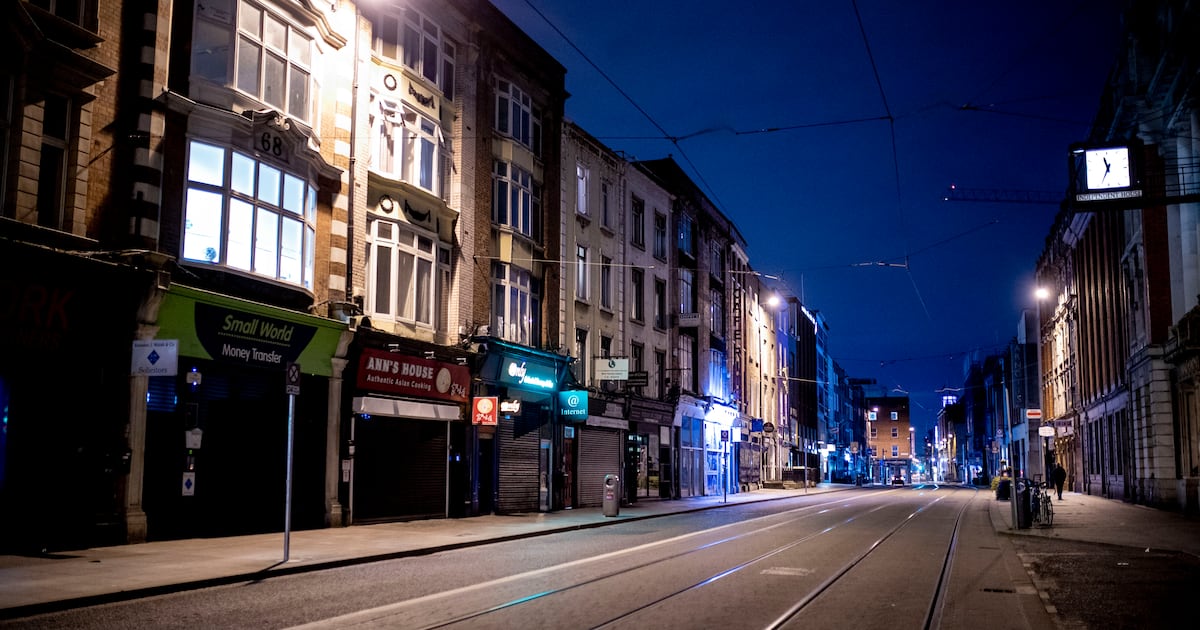Key workers, including nurses, gardaí and teachers, could have the opportunity to rent low-cost homes in the heart of the capital within three years under a Dublin City Council regeneration scheme for vacant and derelict buildings.
North Frederick Street and Middle Abbey Street have been selected for what the council is calling a “bold urban-rejuvenation pilot” to accelerate the provision of cost-rental homes for essential city workers.
Both streets in the north inner city have high levels of vacancy and dereliction, and while some buildings are in council ownership, most are privately owned.
The council will offer supports and incentives to building owners to bring their properties back into use. However, where it encounters “non-co-operative owners”, enforcement will be “prioritised and escalated” up to compulsory acquisition.
The conversion of vacant buildings or unused space above shops into homes for essential workers was one of the 10 “big moves” recommended by the Taskforce for Dublin, the €1 billion plan to revitalise the area around O’Connell Street published last October by then taoiseach Simon Harris.
Essential workers listed in the report included healthcare, public transport and council workers, as well as gardaí, teachers and retail and hospitality staff, all deemed essential to the operation of the city but could not afford to live there.
The report of the council’s urban redevelopment working group, presented to councillors on Tuesday, said the pilot would “transform derelict, vacant and underused buildings into new cost-rental homes for key workers [and] commercial, retail or mixed-use spaces, alongside public realm improvements and street activation measures”.
This represented a “new model of city-centre rejuvenation” that could be scaled up citywide through a special purpose vehicle (SPV) due to be established to deliver the taskforce’s aims.
[ ‘You don’t really live’: Long-distance commuting teachers priced out of DublinOpens in new window ]
“This initiative addresses several urgent challenges in Dublin’s core – a housing affordability crisis, numerous vacant and derelict properties in prime locations, and the need to revitalise the capital’s historic heart – through a proactive approach that brings together multiple council departments, councillors, community groups, central Government, partner agencies and the private sector.”
The council has started compiling information on ownership, vacancy status, physical condition, and any planning history or development potential of the buildings on the two streets.
In the next phase, running from now to June 2026, the council will put together a team and provide a “one-stop-shop” or “concierge service” to building owners, which will provide design and technical advice, assistance navigating planning and building regulations, and information on financial incentives.
In phase three, running to June 2027, the council will engage with owners to secure commitments to refurbish or sell their properties. This phase would also see enforcement against non-co-operating owners whose buildings will be entered on the derelict sites register and targeted for levy collection.
In phase four, from January 2027 to May 2028, construction is expected to get under way, with the first homes made available. This phase will also see escalated enforcement with owners not engaged in the process at risk of having their properties taken into council ownership.
The council was “making clear that dereliction is a social crime and that leaving buildings derelict will incur consequences – from financial penalties to potential compulsory acquisition – while those who collaborate with the pilot will receive extensive, co-ordinated support”, said working group chair Cian Farrell of the Social Democrats. “This robust enforcement backup ensures the pilot has teeth and that progress is not stalled by a few holdouts.”
The final phase involves the establishment of the SPV, a council company that will scale up the project citywide and take over longer-term rejuvenation.

